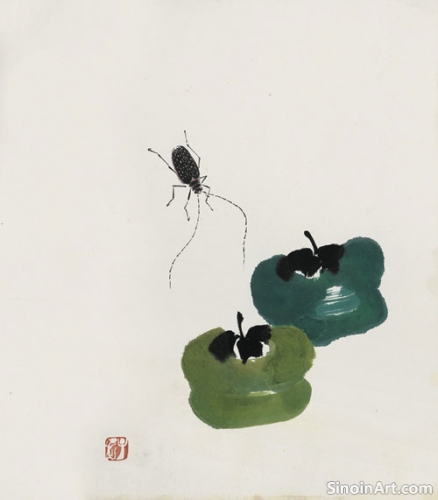The Symbolism of Xieyi: Expressing Inner Worlds
|
While Xieyi painting is often praised for its spontaneity and expressiveness, it's also rich with symbolism, drawing from centuries of Chinese culture and tradition. Each element within a Xieyi painting, from the subject matter to the manner of its depiction, carries layers of meaning, reflecting the artist's inner world and their understanding of the natural world. The symbolic language of Xieyi adds depth and complexity to its expressive power.  The subjects commonly depicted in Xieyi painting are often imbued with symbolic significance. Bamboo, for instance, represents resilience, strength, and humility. Orchids symbolize elegance, refinement, and solitude. Plum blossoms, braving the winter cold, symbolize perseverance and renewal. These are not just depictions of plants but rather representations of human character and values. The selection of subjects reflects the painter’s inner world and philosophy.  Animals are also imbued with symbolic meaning in Xieyi painting. The crane represents longevity and wisdom, the rooster signifies courage, and the tiger embodies strength and power. Each animal is depicted with bold brushstrokes that convey not only its physical form but also its inherent qualities. The animals become symbols of strength, integrity, and grace.  Beyond specific subjects, the overall composition and the use of space also contribute to the symbolic language of Xieyi painting. The empty space, often referred to as "white space," is not simply an absence of form; it's a crucial element in the composition that suggests infinity, balance, and harmony. The use of space is as important as the subject itself, creating a harmonious whole. The freehand brushwork and spontaneous nature of Xieyi painting also carry symbolic significance. The artist’s ability to capture the essence of a subject in a few strokes suggests a deep understanding of the natural world and a freedom from rigid convention. The spontaneity also implies an intimate relationship with nature, reflecting the Daoist influence of naturalness and freedom. By understanding the symbolism of Xieyi painting, viewers can appreciate it on a deeper, more meaningful level. It's not merely about the depiction of a subject; it's about the artist’s attempt to communicate their inner thoughts, feelings, and worldview through the language of brush and ink. This symbolic language adds an extra layer of depth that elevates the art beyond simple representation. |
Tag : Symbolism Xieyi, Chinese Art Meaning, Ink Painting Symbols, Expressive Art, Cultural Symbolism
Related information
- The Concept of "Baimiao" and its Relationship to Xieyi
- The Importance of "Dry Brush" in Xieyi
- The Role of Calligraphy in Xieyi Painting
- Xieyi Landscape Painting: Capturing the Spirit of Nature
- Xieyi and the Influence of Poetry
"Baimiao" (plain drawing) is a foundational technique in Chinese painting, emphasizing precise line drawing to define a subject's contours and forms, influencing Xieyi by shaping its underlying structure, informing composition, and contributing to the overall control and confidence seen in the best Xieyi works.
The "Dry Brush" (kěbǐ) technique is essential in Xieyi, involving minimal ink and water to create broken, scratchy lines that add texture, depth, a sense of age, and dynamism, requiring a sensitive hand and enhancing the spontaneity and expressiveness of the art form.
Calligraphy forms the foundation of Xieyi painting, sharing similar brushwork techniques and aesthetic principles. The concept of "bone strength" and the integration of poetry, calligraphy, and painting are central to understanding the connection between these two forms.
Landscape painting (山水画, shanshuihua) is a major theme in Xieyi, reflecting a deep reverence for nature. Artists seek not to replicate realistic views, but to capture the essence and spirit of the natural world. They aim to evoke a feeling of vastness, serenity, and harmony.
Xieyi painting is profoundly influenced by poetry, with literati artists integrating verse into their paintings, applying similar principles of rhythm and expression, and using symbolic imagery to convey complex ideas and personal feelings, emphasizing the interconnectedness of these art forms.